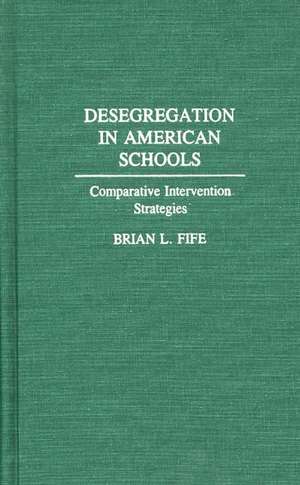Desegregation in American Schools: Comparative Intervention Strategies
Autor Brian L. Fifeen Limba Engleză Hardback – 19 mai 1992 – vârsta până la 17 ani
Preț: 436.57 lei
Preț vechi: 707.06 lei
-38% Nou
Puncte Express: 655
Preț estimativ în valută:
83.54€ • 86.18$ • 69.71£
83.54€ • 86.18$ • 69.71£
Carte tipărită la comandă
Livrare economică 26 martie-09 aprilie
Preluare comenzi: 021 569.72.76
Specificații
ISBN-13: 9780275941406
ISBN-10: 027594140X
Pagini: 224
Dimensiuni: 140 x 210 x 23 mm
Greutate: 0.45 kg
Ediția:New.
Editura: Bloomsbury Publishing
Colecția Praeger
Locul publicării:New York, United States
ISBN-10: 027594140X
Pagini: 224
Dimensiuni: 140 x 210 x 23 mm
Greutate: 0.45 kg
Ediția:New.
Editura: Bloomsbury Publishing
Colecția Praeger
Locul publicării:New York, United States
Notă biografică
Brian L. Fife is in the School of Public Affairs at Perdue University in Indiana. He holds a BA from the University of Maine and an MA and PhD from the State University of New York at Binghamton.
Cuprins
School Desegregation Since Brown IMandatory Versus Voluntary School Desegregation StrategiesTwenty Districts: From Boston to TulsaComparing Different Types of School Desegregation PlansThe "White Flight" Hypothesis RevisitedFuture Progress Toward DesegregationReferencesAppendixBibliographyIndex











